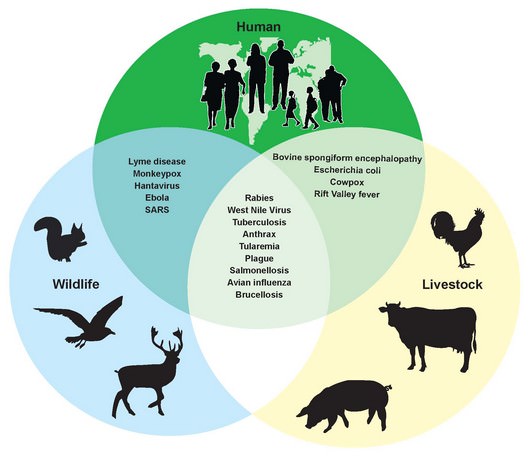London: A group of British scientists claimed that they had
developed a model that can predict outbreaks of zoonotic diseases, which
spreads due to climate and population changes. The scientists had described the
model as ‘a major improvement in our understanding of the spread of diseases
from animals to people’, which will alarm the governments to prepare for the
worst. Reports are that the zoonotic model responds in disease outbreaks ‘and
to factor in their risk when making policies that might affect the environment.’

A zoonotic disease spread between animals and humans,
causing diseases like Zika or Ebola. A zoonotic disease can be caused by virus,
bacteria, parasites and fungi. It is assumed that six out of every 10
infectious diseases in humans are spread from animals. Almost 60 to 75 percent
infectious diseases come from animals to humans.
The model, therefore, focuses upon the fast-paced spread of
these diseases. Kate Jones, a professor who co-led the study at University
College London's Genetics, Evolution And Environment Department, said: “Our
model can help decision-makers assess the likely impact (on zoonotic disease)
of any interventions or change in national or international government
policies, such as the conversion of grasslands to agricultural lands.” She also
added that the new model of zoonotic model is capable to foresee the impact of
global climate changes and population reallocation and impact on many diseases
at once.
The team of scientists revealed that they had collected
data from 408 different locations, infamous for Lassa fever outbreaks in West
Africa between 1967 and 2012. They noted the changes of land use and crop
yields, temperature, rainfall and access to healthcare parameters. The
multimammate rat that transmits Lassa virus to humans, were also mapped by the
group to estimate the ecological factors. Jones asserted that 45 years of long
data collection process had finally came to an end following the forecasts of climate change, future
population density and land-use change.
“It allows us to calculate how often people are likely to
come into contact with disease-carrying animals and their risk of the virus
spilling over. Our approach successfully predicts outbreaks of individual
diseases by pairing the changes in the host's distribution as the environment
changes with the mechanics of how that disease spreads from animals to people,”
said David Redding, another co-scientist.
No comments:
Post a Comment